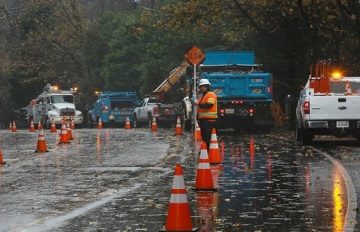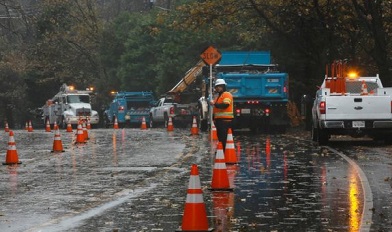
Rain has come to northern California, helping to contain deadly wildfires but bringing fears of mudslides that may complicate recovery efforts.
Some four to six inches of rain (10-15cm) are expected to fall in the coming days, and some areas have been warned to prepare for flash flooding.
At least 80 people died in the fires that swept across the state.
More than 500 people remain unaccounted for after the so-called Camp Fire destroyed the town of Paradise.
Workers have been combing through the debris from more than 10,000 homes that were burned down by the fire.
The rain that began to fall on Wednesday is the first significant downpour for the state in about six months.
It came as a relief to those less affected by the fires. By Wednesday afternoon, it had cleared smoke from the air that had closed many schools in San Francisco, the New York Times reports.
Jim Mackensen of the US Forest Service said the rain would slow the spread of the wildfires “to the point that we’ll be able to finish up the firefighting operations pretty quickly”.
But he added that “on the flip side it is going to make the search for the human remains and the recovery effort more difficult because it’s going to get really muddy and sloppy up there”.
National Weather Service forecaster Johnnie Powell said there was a real risk of mudslides because “there’s no vegetation to hold the earth”.
ALSO READ: California wildfire death toll at 71, more than 1,000 missing
In a race against time, hundreds of people along with crews with cadaver dogs swept through the debris of Paradise and surrounding areas in the search for the missing. They were wading through ash that officials fear would turn into a thick paste with the onset of rain.
By Wednesday, they had found 83 bodies and had “tentative identifications” on 58, Sheriff Kory Honea of Butte County said. The number of people unaccounted for stands at 563, he added.
He warned that the rain and mud may mean that the remains of some people may never be found. “What we’re looking for in many respects are very small bone fragments so, as we go forward, it’s certainly possible that not all of them will be located,” he said.






